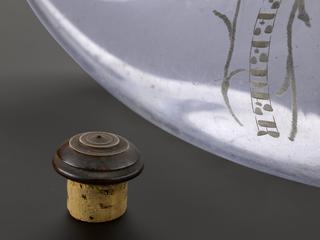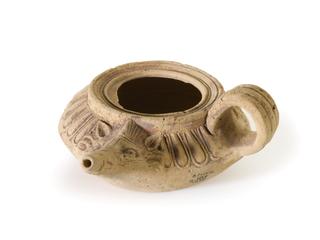
Red clay water-pipe, or drain-pipe, probably dating from the 16th or 17th century, with shaped spigot and socket ends to allow a chain of them to be connected, found during the demolition of an old Malt House in Lower Street, Pulborough, Sussex, 1911.
Connecting lengths of fired clay pipe, as a means of transporting water or removing waste, has a long history. Pipes made from this material have been unearthed dating back several thousand years, such as those found on ancient Babylonian sites in what is now Iran and Iraq. The lengths are shaped to allow them to be connected into long chains – though leakage was often a problem.
This pipe was found in February 1911, during the demolition of what was described as a 17th century malt house in the Sussex village of Pulborough. It’s believed to be of similar age. The location would suggest the pipe was one used to carry water for the process whereby cereal grain is converted into ‘malt’ through soaking in water. Once the grains sprout, they are then dried to prevent further growth. The resulting malt is likely to have been used for brewing beer. The pipes could also have provided a domestic drinking supply.
The demolition of the malt house were almost certainly associated with an archaeological dig. Sites in the village were excavated for Roman remains during that period and a paper label on the pipe states that it was presented to an ‘R Garraway Rice’. This is Robert Garraway Rice, a leading archaeologist excavated in that area. It was presented by Edward Bowler, who in an 1889 edition of the 'Brewer's Guardian', is located in Pulborough and described as a coal merchant , dairyman and dealer in beer.
Details
- Category:
- Water Supply Metering
- Object Number:
- 1933-311
- Materials:
- clay
- Measurements:
-
overall: 17 in
internal diameter: 2 in,
- type:
- water pipe
- credit:
- Rice, R.G.




